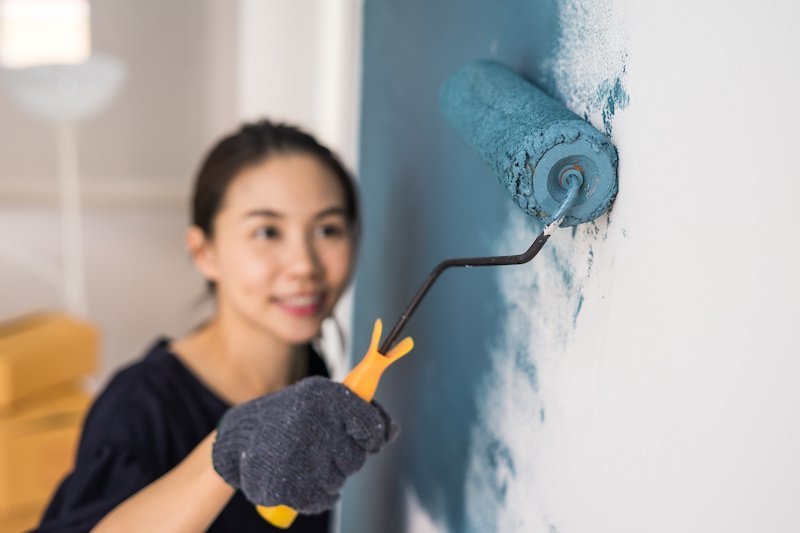New Construction Interior Design: 4 Professional Designer Tips
Posted by Gary Ashton on Wednesday, April 13th, 2022 at 9:59am.

When it comes to new construction homes, owners have a nearly blank canvas on which to decorate and customize. While the HOA might have certain restrictions on what buyers can do with the property's exterior, the interior is generally entirely up to their discretion. Freedom to design is one of the biggest pros of buying new construction, but the abundance of freedom can make it hard to decide where to begin. If you're ready to get focused on the interior design of your new build, keep reading to learn about four design tips for new construction houses.
Plan Your Furnishings Ahead of Time
Taking an inventory of current furniture and decorative items around four months before moving is the best way to determine what new items will be needed and which items can be discarded and purchased new after moving. Base your decisions on the architectural features of your new home. If you've managed to find a home builder that's collaborating with you on the blueprints, keep the interior design in mind from the earliest stages of the process.
Getting a head start gives buyers or professional interior designers plenty of time to order any new pieces that will be ready for delivery once the construction phase is completed. Remember, the fewer items moved, the less there will be to do or workaround during the decorative stages.
Not everything needs to be bought at once, so start with the main rooms first. Staying to the basics initially upon moving in can be helpful when the time comes to paint the home—which isn't always as quick as new construction home buyers might think.
Wait For the House to Settle Before Painting
There are quite a few materials that go into a new home construction project, and most of them will need to become "seasoned" for the environment. These compounds should be thoroughly dried out before a final paint job should be done. Allowing ample time for the home to settle on its foundation while these materials adapt is also recommended.
Around one year is the rule of thumb, depending on the home's climate. Some materials may shift, resulting in wall cracks. These most commonly include:
- Drywall & Sheetrock
- Plaster & Joint Compounds
- Concrete Foundation
- Timber Framing
- Exterior Bricks & Stones
Premature painting can lead to more than wall cracks but can also result in nail pops and peeling paint that can require repairs or an entire repainting of the affected areas.
Prioritize Walls and Windows for a Finished Look
 New home builders typically paint all the walls in a new construction home the same color, often white or beige. Also, windows will likely include the most basic treatments unless requested as upgrades or included in the primary package contract.
New home builders typically paint all the walls in a new construction home the same color, often white or beige. Also, windows will likely include the most basic treatments unless requested as upgrades or included in the primary package contract.
When the time arrives to get serious about decor, and the house has settled, professionals recommend starting with vertical surfaces like walls and windows. Customize the walls with colors that complement the desired overall design, paying particular attention to accent walls that can be spruced up with high-contrast hues, decals, or abstract wallpaper. Choose a few colors to make each room feel finished and more inviting.
Set off the walls and make the most of available views with stylish window curtains, remote-controlled blinds, or heavier drapes to add a sense of luxury to spaces. With these in place, finish the look with large-scale art, shelving, or other decors that achieve the desired results of the interiors.
Add Personality By Swapping Out Default Options
When building a new construction home in an established community with a pre-selected builder, model homes are shown with all the bells and whistles concerning available features and options. However, what you see isn't always what one gets unless they request certain upgrades before their project gets started or is finished.
Add personality to a new build to make the dream home you envisioned it would be with custom features. Some popular ways that buyers can add special touches to their home include upgrading or having builders swap out:
- Door handles
- Light fixtures
- Wood, tile, or carpet flooring
- Interior or exterior doors
- Window treatments
- Appliances
- Countertops, cabinet handles, and pulls
Those having a custom home built tend to have a "sky's the limit concept," whereas new home builders have the freedom to design homes with the features a buyer wants in mind.
Customize Your New Construction Home With Ease
With these tips about when and how to get the best results when decorating a new construction home, buyers can enjoy a remarkable property inside and out for years to come. Once you get the keys to that new home, be patient with painting your home and making design choices. After all, it's your home, and there is no rush when attempting to achieve perfection!

Gary Ashton
The Ashton Real Estate Group of RE/MAX Advantage
The #1 RE/MAX team in the World!
